
Subaru near the summit of Mauna Kea in Hawaii ©NAOJ
Near the summit of Mauna Kea in Hawaii, there are more than 10 huge telescopes lined up. Globally, Mauna Kea is an ideal place for leading astronomical observation, and research institutes from around the world, including the United States, have built telescopes there.
One of these telescopes is the Subaru telescope built by the National Astronomical Observatory of Japan. Subaru has a diameter of 8.2 meters, and has one of the world's largest primary mirrors, in addition to many revolutionary technologies for precise observation. The telescope has a leading-edge dome that suppresses atmospheric turbulence, and independent observation equipment with an auto-exchanger system at four focal points, but what is most surprising are the robot fingers, a technology called Active Optics, that support the primary mirror.
The Huge Mirror Cannot have the Slightest Distortion
The biggest advantage of Subaru is its large 8.2-meter diameter primary mirror. By making the mirror large, the faint and distant light from the far-off universe can be seen. Also, the mirror used in the Subaru telescope is a single large mirror, not an assembly of many mirrors.
However, the weak point of large mirrors is their weight. To make it just a little lighter, the primary mirror is only 20 cm thick, but at 22.8 metric tons the weight of the mirror was still at the limit of what could be supported and, if ignored, the weight of the mirror itself would cause distortion. In addition, when the telescope is tilted to the desired direction, the distortion increases and the mirror may even break. Even if that doesn't happen, if there's even the slightest distortion, distant stars can't be seen clearly. Because the mirror itself has a surface precision of 12 nanometers, not even the slightest distortion can be allowed.
261 Robot Fingers Support the Mirror from the Back
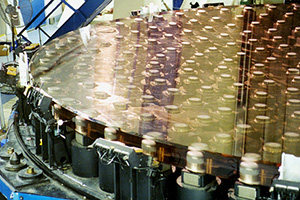
261 robot fingers support the mirror from the back. ©NAOJ
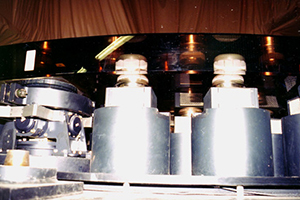
The robot fingers each move independently and adjust the mirror to the optimal shape. ©NAOJ
Subaru uses a technology called Active Optics. The large primary mirror is supported from the back by 261 robot fingers (actuators). These robot fingers are controlled by a computer, and move according to the tilt of the primary mirror to correct the distortion.
The amazing thing about Subaru is how many robot fingers there are compared to other telescopes, the control technology, and the fact that to increase the precision the robot fingers are mounted directly onto the back of the primary mirror. There are 261 robot fingers that each move the optimal amount and increase the precision of the primary mirror. It is this precise control that makes Subaru one of the world's best telescopes.
Subaru has More Leading-edge Technology
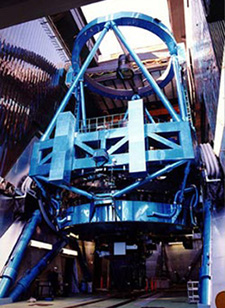
The 555 metric tons of Subaru is moved by linear motors. ©NAOJ
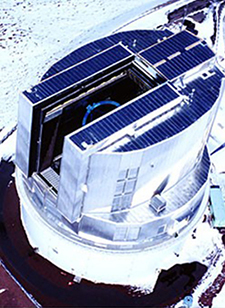
The dome has a shape that minimizes atmospheric turbulence as much as possible. ©NAOJ
Subaru has more amazing technology. For example, the telescope's enclosure. The telescope itself weighs 555 metric tons, and to support it and move it in the desired direction the enclosure rides on oil. To suppress friction as much as possible, linear motors riding on oil move Subaru.
The dome that covers the telescope was constructed so that the turbulence of the outside air does not effect it, and fluid flow experiments were carried out repeatedly until the present chimney-like shape was selected. In addition, because it can be dangerous to exchange large observation equipment on the summit of Mauna Kea, which stands at more than 4,000 meters, Subaru uses equipment that can exchange equipment automatically.
This is how Subaru uses so many leading-edge technologies for precise observation.
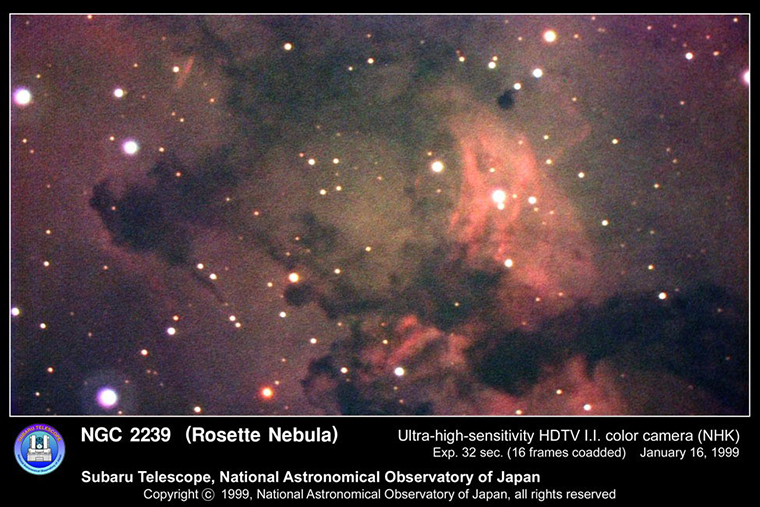
A photo taken at Subaru of the Rosette Nebula, 2,600 light years from the Earth ©NAOJ